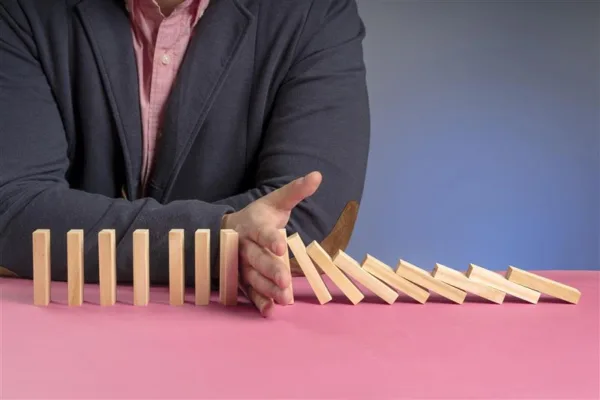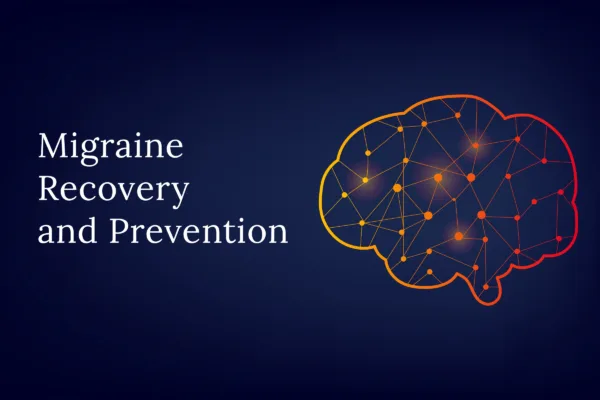Migraine is not just a simple headache. Each migraine episode has various stages. The duration of migraine attack varies. Untreated migraines typically last for 2 days or, rarely, up to a week. But what is common in each migraine episode are the stages of migraine. A clear understanding of each stage of migraine helps in better managing the condition and its treatment.
First, let’s understand what migraine is. It is a severe headache that causes throbbing, pulsing pain on one side of your head. As mentioned earlier, the pain lasts for a few hours, days or rarely for a week. It can get worse with bright lights, loud noises, physical exertion, and strong odours. Remember, migraines can be disruptive. It can disturb your daily life routine if not treated and managed with proper medical attention.
1.Prodrome (Early Warning)
Also known as “preheadache”, it marks the onset of migraine. This phase is more common in women as compared to male. If you can catch the migraine at this stage, the treatment will be more effective and easier to manage
Duration:
1–2 days before headache
Symptoms:
- Yawning, tiredness, or depression
- Food craving
- Frequent urination
- Difficulty concentrating, reading, or speaking
- Mood swings
- Muscle aches
- sensitivity to light or sounds
Management:
- Avoid migraine triggers
- Preventive medications
- Relaxation techniques like yoga or meditation
2.Aura (Warning)
Almost one-third of people experience this stage, which is approximately 25 -30%. It involves different visual and sensory disturbances. This phase is the warning sign. Some people may experience auras before the headache begins, while others may have them alongside the headache.
Duration:
5–60 minutes before the headache
Symptoms:
- Visual disturbances (zig-zagging lines, flashes of light, various shapes, bright spots)
- Auditory disturbances (hearing a noise, ringing or buzzing sound)
- Physical sensations (numbness, tingling, uncontrollable movement or muscle weakness)Physical sensations (numbness, tingling, uncontrollable movement or muscle weakness)
- Language disturbances (difficulty finding or understanding words)
- Vision loss
Management:
- Get immediate medical attention
- Seek a dark spot
- Take rest or sleep
- Have medicine as prescribed
3.Headache (Onset)
If your episode has progressed to the headache phase, it typically begins with gradual pain and then intensifies to a more severe level. Normally, the pain is localised to one side of the head but can also involve the other side as it progresses
Duration:
4-72 hours
Symptoms:
- Throbbing or pulsating or drilling pain
- Nausea and vomiting
- Inability to sleep
- Anxiety or depressed mood
- Neck pain and stiffness
- Sensitivity to sound, light and smell
- Disruption in daily routine activities
Management:
- Lie in a dark and quiet room
- Cold compress to the back of your neck
- Practice relaxation techniques
- Take medicines as prescribed by your doctor
4.Postdrome (Migraine Hangover)
It is the last phase of migraine. Approximately 80% of people experience this phase. Even if the symptoms go away, your migraine is still there; it’s not yet over. It is the prodrome phase or migraine hangover. The duration of this phase may vary. A person might feel fatigued, tired, or drained for at least a day.
Duration:
24-48 hours
Symptoms:
- Trouble concentrating or understanding things
- Fatigue
- Depression
- Euphoria
- Body aches
- Dizziness
- Sensitivity to light
Management:
- Stay hydrated
- Engage in relaxing activities like yoga or meditation
- Avoid stress
- Take medications as prescribed

When to Seek Help?
A variety of underlying reasons or health issues can cause headaches. But if your symptoms are relatable to migraine, seek professional help. Accurate and timely diagnosis is essential for better treatment and management.
If you are experiencing within a month at least four episodes of migraine, it is crucial to seek immediate professional help. In today’s advanced era of modern science, many multiple treatment options are available where some can prevent it, and others can stop migraine. Don’t hesitate to ask your doctor about different treatment options, or contact the Headache, Migraine & Concussion Centre.
In case you experience the below symptoms, it’s time to rush to emergency care:
- Sudden, severe headache with intolerable pain
- Headache along with blurry vision, difficulty speaking pa, paralysis or drooping on one side of the face
- Headache with stiffed neck, rash, muscle or joint pain or fever
FAQS
How long does a full migraine episode last?
A migraine attack episode can last anywhere from 4 to 72 hours, including all phases (prodrome, aura, headache, postdrome). It can take at least 5 days to recover from migraine
Do all migraine attacks include all four stages?
No. Not everyone experiences all four stages. It varies from person to person
What triggers the different phases of a migraine?
A migraine attack episode can last anywhere from 4 to 72 hours, including all phases (prodrome, aura, headache, postdrome). It can take at least 5 days to recover from migraine
What is the fastest way to get rid of a migraine?
The fastest way to get rid of a migraine is by taking over-the-counter pain.
- Placing heating pads or ice packs on your neck and forehead
- Lying in a calm, quiet, and dark room
- Drinking water or small amounts of a caffeinated beverage
Can a shower help with migraines?
A hot shower may ease a migraine by muscle relaxation.
Is heat or ice better for migraines?
Both options are workable, but an ice cream can help more.
References:
https://americanmigrainefoundation.org/resource-library/timeline-migraine-attack/
https://www.webmd.com/migraines-headaches/timeline-migraine
https://www.mayoclinichealthsystem.org/hometown-health/speaking-of-health/what-arethe-stages-of-a-migraine
https://eruc.riverview.org/2024/01/22/migraine-attack-timeline-and-treatment/
https://www.medicalnewstoday.com/articles/migraine-timeline


















